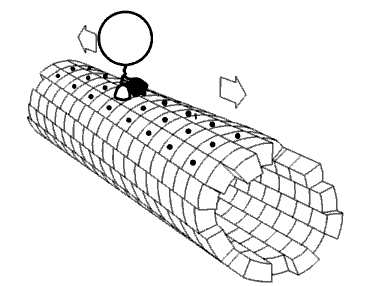
Photo from academic.microsoft.com
Quantifying chemical substituent contributions to ligand-binding free energies is challenging due to nonadditive effects. Protein allostery is a frequent cause of nonadditivity, but the underlying allosteric mechanisms often remain elusive.… Click to show full abstract
Quantifying chemical substituent contributions to ligand-binding free energies is challenging due to nonadditive effects. Protein allostery is a frequent cause of nonadditivity, but the underlying allosteric mechanisms often remain elusive. Here, we propose a general NMR-based approach to elucidate such mechanisms and we apply it to the HCN4 ion channel, whose cAMP-binding domain is an archetypal conformational switch. Using NMR, we show that nonadditivity arises not only from concerted conformational transitions, but also from conformer-specific effects, such as steric frustration. Our results explain how affinity-reducing functional groups may lead to affinity gains if combined. Surprisingly, our approach also reveals that nonadditivity depends markedly on the receptor conformation. It is negligible for the inhibited state but highly significant for the active state, opening new opportunities to tune potency and agonism of allosteric effectors.
Journal Title: Biophysical journal
Year Published: 2020
Link to full text (if available)
Share on Social Media: Sign Up to like & get
recommendations!